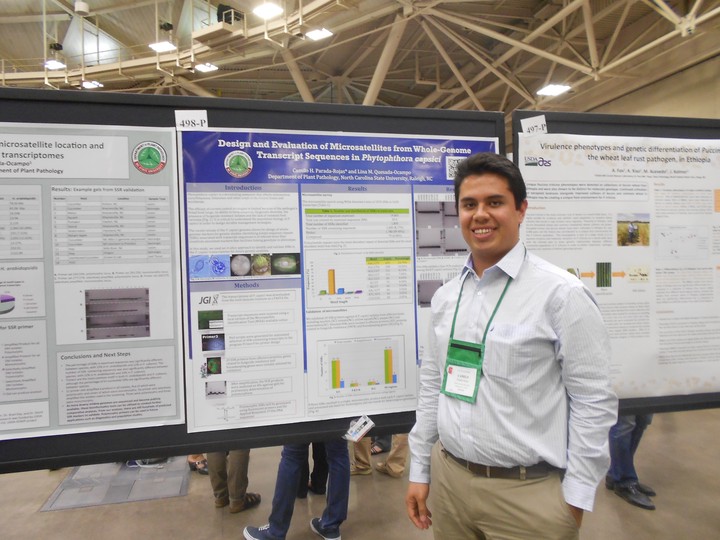Design and Evaluation of Microsatellites from Whole-Genome Transcript Sequences in Phytophthora capsici.
 [Photo by Emma Wallace]
[Photo by Emma Wallace]Abstract
Phytophthora capsici is a devastating oomycete that affects solanaceous, cucurbitaceous, fabaceous and other crops in the United States (US) and worldwide. Research on the genetic structure of this pathogen has increased in recent decades; however, such studies have used limited markers due to the absence of genomic resources for P. capsici. The recent release of the P. capsici genome allows for design of whole-genome markers for genetic studies. Microsatellites or simple sequence repeats (SSRs) have been a preferred marker due to their co-dominant nature and high polymorphism. Identifying SSRs associated with transcript sequences is of interest since they constitute annotated markers with a predicted function. In this study, we used an in silico approach to identify SSRs in P. capsici whole-genome transcript sequences and to design primers for genetic analyses. Using the MIcroSAtellite identification tool (MISA), the total number of 1–6 bp perfect SSRs detected in P. capsici transcript sequences (19,805) represented 9.36% (1,855 SSRs) of the transcripts. Identified SSRs mainly included trinucleotide repeats, of which repeat motif AAG was the most abundant (7.92%). Primers were designed for detected SSRs; a subset was evaluated in a diverse set of P. capsici isolates, and several were found to be polymorphic. The identified SSRs improve the current resources of molecular markers for this pathogen, which will facilitate P. capsici genetic studies in the US.